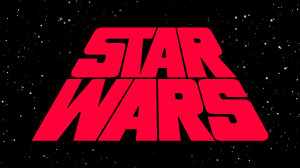If astronauts aboard the International Space Station have any luck, they’ll have some spicy peppers to munch on sometime later this year. Friday, NASA revealed astronaut Shane Kimbrough has started an experiment called Plant Habitat-04, a process where he’s going to try growing Hatch chile peppers from seed aboard the space station. Seeds arrived at the space-faring satellite last month, and should the peppers be able to grow, bloom, and produce fruits, it’ll be the first time peppers have ever been grown from seed in space.
Videos by ComicBook.com
The seeds were planted in a special carrier by NASA officials here on Earth before being sent to orbit aboard a commercial SpaceX carrier in June. Once they arrived, Kimbrough then placed the carrier in a device on the space station called an Advanced Plant Habitat (APH), a growth chamber roughly the size of a consumer oven.
“The APH is the largest plant growth facility on the space station and has 180 sensors and controls for monitoring plant growth and the environment,” PH-04 project manager Nicole Dufour said in a press release distributed by NASA. “It is a diverse growth chamber, and it allows us to help control the experiment from Kennedy, reducing the time astronauts spend tending to the crops.”
NASA officials expect the peppers to mature within four months, and crew members will eat some aboard the space station should the “data indicate” they’re safe for consumption. The rest of the peppers will then be transported back to NASA headquarters for further analysis.
Hatch chiles clock in at around 2,500 Scoville Heat Units (SHU), similar to poblano peppers or Anaheim chiles. In comparison, jalapenos are roughly 8,000 SHU while the hottest pepper on the planet — the Carolina Reaper — can reach the fiery heights of 2.2 million SHU.
“It is one of the most complex plant experiments on the station to date because of the long germination and growing times,” said Matt Romeyn, principal investigator for PH-04. “We have previously tested flowering to increase the chance for a successful harvest because astronauts will have to pollinate the peppers to grow fruit.”
NASA testing planet-side yielded good results, and the space-faring outfit says experiments here made Hatch peppers “a viable space crop.”
“The challenge is the ability to feed crews in low-Earth orbit, and then to sustain explorers during future missions beyond low-Earth orbit to destinations including the Moon, as part of the Artemis program, and eventually to Mars,” Romeyn added. “We are limited to crops that don’t need storage, or extensive processing.”
Cover photo by GREGG NEWTON/AFP via Getty Images









